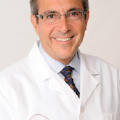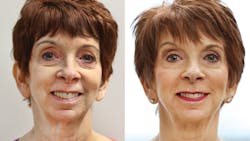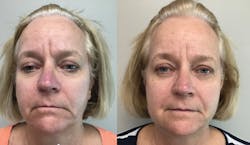There is no question that baby boomers and seniors are attracted to a different marketing structure than other age groups. Being a baby boomer myself, I took mental notes for the last few weeks on day-to-day marketing that I was exposed to and reacted to, whether by clicking on a link, seeking more information, or making a purchase.
Adults 50 and older (those born before and during the baby boom from 1946 to 1964) are incredibly important to the success of your practice—and are often untapped. The 50-plus demographic is the fastest growing, 111 million strong, compared to 75 million millennials and 61 million Gen Xers.1 This group has the most wealth, owning 63% of all US financial assets, and they spend $3.2 trillion annually, which alone is a greater GDP than other countries such as the United Kingdom, France, Britain, and Russia.1
They also need the most dentistry and are willing more than ever to invest in themselves. Because they are expected to live 30 years longer than their peers from a century ago,1 many are spending generously for self-care, and especially esthetics such as dental implants, veneers, Botox, dermal fillers, and solid filler polydioxanone (PDO) threads.
According to dental digital marketing expert Rick Diaz of Tier3Media, many times, practices and even marketing agencies look at a group of people as a segment and forget that all people buy with emotion (private communication). Failure to speak to emotion is the difference between effective and ineffective marketing. Senior citizens who are qualified candidates for elective procedures must first feel that they have a problem that requires a solution. The good news is that many are at a stage in their lives when they have the discretionary income to make an investment in their oral health or appearance. The question is, “How do we make them feel something with our marketing?”
It is important to think about why most people consider elective treatments such as Botox, veneers, and implants. Typically, these individuals are unhappy about their appearance. They feel embarrassed to smile, dread pictures, are depressed because they can’t do things they once did, the list goes on. Notice the words that have described their feelings: anxious, embarrassed, dread, depressed. All these feelings we generally try to avoid. For these individuals, the pain of being judged or judging themselves is greater than their desire for the pleasure of being connected with others. Always remember, all people are driven by two motivations: the desire to move toward pleasure or away from pain.2
A marketer’s job is to tap into the pain of not being able to access pleasure, and then provide a solution. Spoiler alert: people don’t buy Botox, veneers, or implants! They are investing in confidence, happiness, connecting with family and friends, and most importantly, they are buying you.
When you create marketing campaigns, do not focus on the newest implant or technology. Most consumers are not familiar with brand-name dental technology, and will base decisions on it. When it comes to injectables, using highly popular brand names such as Botox will bring in these patients. This group reacts very positively to recognizable brand names.3 Use this to your advantage!
People validate buying decisions with logic, but we buy based on how we feel. The methods, channels, and content all must paint a picture of what life is like now and what it will feel like tomorrow. Can your practice do that in one day, or with a simple process? Can you bring comfort and understanding and show proof that you can meet them where they are and help them restore their confidence? According to Rick Diaz, if you can answer those questions, you can start to build out campaigns that will speak louder and more effectively to prospective patients who really do want to hear from you (private communication). You just have to speak their language and give them hope.
According to Audrey Neff, marketing director of Crystal Clear Digital Marketing, SEO, reviews, before-and-after photos, social media, email marketing, and a mobile-responsive website all play equal parts (private communication). You should also tailor the messaging to be relevant to the age demographic you are trying to reach. If you’re posting before-and-after photos on your website or social media, they should be of other senior patients just like them.
In addition to digital initiatives, leveraging traditional marketing, such as print ads in local publications or newspapers, can be effective in reaching the senior demographic, since they still value these channels. Having a presence in your local community can also be advantageous, whether it’s partnering with charities, gyms, or even nursing homes.
Audrey Neff identifies the biggest marketing challenge as understanding the importance of your leadership, people, process, and tools in the practice (private communication). Why? Because you can drive all the traffic in the world to your website, phones, and front desk, but if your people aren’t properly trained and motivated on effectively selling the value versus the price of these treatments, and they aren’t creating a world-class experience for the senior patient, your marketing return on investment will suffer.
Remember that tapping into your existing senior patient base is another powerful way to upsell and cross-sell elective treatments—these patients already trust you and are loyal to you as a provider. Utilizing segmented email campaigns, as well as having bulletproof sales processes with your staff, are effective strategies.
Shockingly, only 10% of marketing dollars are spent on older adults.3 Dentists need to invest in marketing to this audience if they want to exponentially grow their practices. The ability for you and your practice to attract seniors who are ready and able to accept elective high-end treatments is an incredible opportunity. Find a proven, trusted marketing partner who understands this demographic and has success in driving these patients to your office.
This all works with the assumption that you are well trained in the most popular elective dental treatments to seniors. Botox is the most requested introductory elective esthetic service for seniors as it is the most recognizable brand name, works quickly, and is the most affordable. Once these patients are happy with the first services you provide, this builds trust and opens the door to many more elective treatments. Get trained today in the most popular treatments patients want and this will make your marketing more effective than ever!
References
- Older population and aging. US Census Bureau website. https://www.census.gov/topics/population/older-aging.html.
- Pleasure principle (psychology). Wikipedia. https://en.wikipedia.org/wiki/Pleasure_principle_(psychology).
- Bradbury M. The 7 incredible facts about boomer’s spending power. Huffpost website. https://www.huffpost.com/entry/the-7-incredible-facts-about-boomers-spending_b_6815876. Published March 17, 2015.
LOUIS MALCMACHER, DDS, MAGD, is a practicing general dentist and an internationally known lecturer and author. He is the president of the American Academy of Facial Esthetics (AAFE). You can contact him at (800) 952-0521 or [email protected]. Go to facialesthetics.org for information about live-patient Botox and dermal fillers training, solid-filler PDO thread lifts, frontline TMJ and orofacial pain training, dental sleep medicine, bruxism therapy and medical insurance, and to sign up for a free monthly e-newsletter.
About the Author

Louis Malcmacher, DDS, MAGD
Louis Malcmacher, DDS, MAGD, is a practicing general dentist and an internationally known lecturer and author. He is the president of the American Academy of Facial Esthetics (AAFE). You can contact him at (800) 952-0521 or [email protected]. Go to facialesthetics.org for information about live-patient Botox and dermal fillers training, solid-filler PDO thread lifts, frontline TMJ and orofacial pain training, dental sleep medicine, bruxism therapy and medical insurance, and to sign up for a free monthly e-newsletter.


